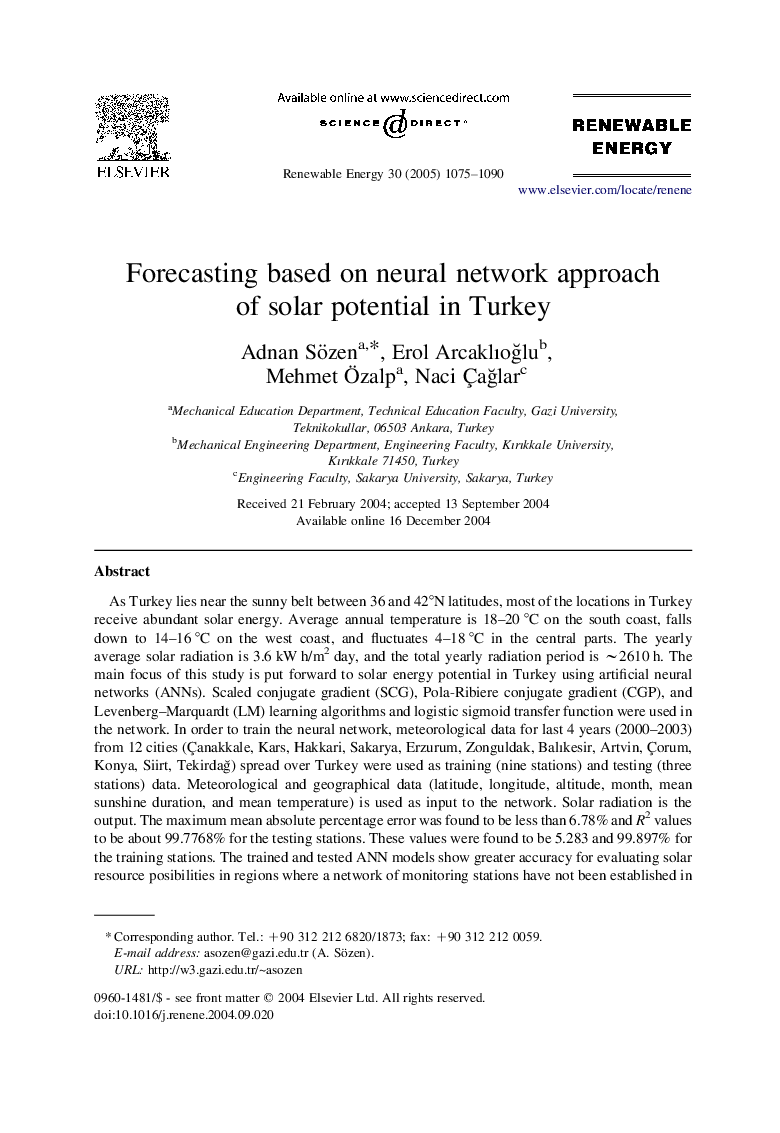| Article ID | Journal | Published Year | Pages | File Type |
|---|---|---|---|---|
| 10294297 | Renewable Energy | 2005 | 16 Pages |
Abstract
As Turkey lies near the sunny belt between 36 and 42°N latitudes, most of the locations in Turkey receive abundant solar energy. Average annual temperature is 18-20 °C on the south coast, falls down to 14-16 °C on the west coast, and fluctuates 4-18 °C in the central parts. The yearly average solar radiation is 3.6 kW h/m2 day, and the total yearly radiation period is â¼2610 h. The main focus of this study is put forward to solar energy potential in Turkey using artificial neural networks (ANNs). Scaled conjugate gradient (SCG), Pola-Ribiere conjugate gradient (CGP), and Levenberg-Marquardt (LM) learning algorithms and logistic sigmoid transfer function were used in the network. In order to train the neural network, meteorological data for last 4 years (2000-2003) from 12 cities (Ãanakkale, Kars, Hakkari, Sakarya, Erzurum, Zonguldak, Balıkesir, Artvin, Ãorum, Konya, Siirt, TekirdaÄ) spread over Turkey were used as training (nine stations) and testing (three stations) data. Meteorological and geographical data (latitude, longitude, altitude, month, mean sunshine duration, and mean temperature) is used as input to the network. Solar radiation is the output. The maximum mean absolute percentage error was found to be less than 6.78% and R2 values to be about 99.7768% for the testing stations. These values were found to be 5.283 and 99.897% for the training stations. The trained and tested ANN models show greater accuracy for evaluating solar resource posibilities in regions where a network of monitoring stations have not been established in Turkey. The predictions from ANN models could enable scientists to locate and design solar energy systems in Turkey and determine the best solar technology.
Keywords
Related Topics
Physical Sciences and Engineering
Energy
Renewable Energy, Sustainability and the Environment
Authors
Adnan Sözen, Erol ArcaklıoÄlu, Mehmet Ãzalp, Naci ÃaÄlar,
